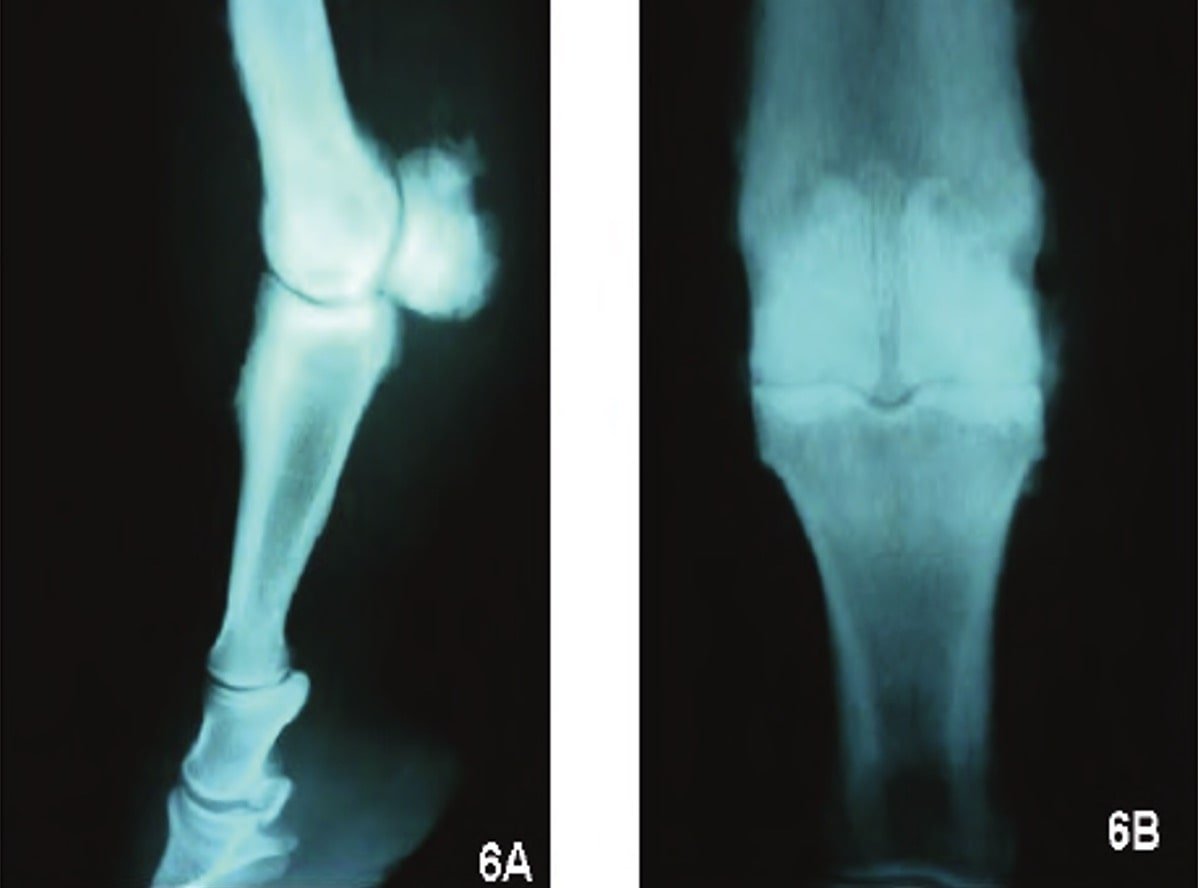Osselets in horses
Osselets in horses is a traumatic arthritis of the metacarpophalangeal joint (the fetlock) of the front leg. It usually occur in the front legs of the horse, because there is more strain and concussion on the fetlock there than in the hind legs. The arthritis will occur at the joint between the cannon bone and large pastern bone, at the front of the fetlock.
An osselet is a callous that occurs when the horse’s fetlock joint becomes arthritic. The condition begins with chronic stress injury to the capsule of the front fetlock joint from repeated concussive forces during racing and hard training. One or both front feet may be affected. Horses with long or upright pasterns are predisposed to osselets.
During high speed gallops, the fetlock joints extend so much that the pasterns sink almost to track level and a callous or osselet forms on the joint’s front face where the top of the pastern bone strikes against the lower end of the cannon bone. The horse becomes lame, and develops a short, choppy gait.
As the condition worsens, the interior structures of the joints become more irritated, the fibrous joint capsule starts to thicken, and extra bone begins to form. Ulcerated cartilage leads to recurring inflammation and the horse’s performance deteriorates quickly if rest and treatment are not provided.

Symptoms
- Soreness in the front fetlock joint of one or both front feet
- Visual presence of swelling and new bone growth on outside front of the fetlock joint
- Arthritic symptoms
- Short, choppy gait
- Increasing lameness
- Noticeably thickened joint capsule
Causes
Osselets are caused by repeated pounding of the long pastern bone against the lower end of the cannon bone while a horse is racing or participating in hard training. Stretching and tearing of the fetlock joint capsule leads to acute arthritis.
If not treated, swelling and new bone growth on the outside front of the fetlock causes the horse to become extremely lame as the interior structures of the joints become more irritated.
Extra bone forms on the lower end of the cannon bone and the high end of the long pastern bone. As bone growth progresses and the area degenerates, the amount of flexion in the fetlock joint causes additional problems. Once the joint attachment becomes degraded, chronic lameness occurs.

Mediolateral (A) and dorsopalmar (B) radiographs of the metacarpophalangeal region revealed the presence of a new bone growth (osteophytes) at the proximal sesamoid bones (sesamoiditis), around the fetlock joint (osselets) and at the shaft of the proximal phalanx (high ringbone).
Prevention
Prevention of osselets is best achieved through careful attention to the condition of a horse’s front limbs, especially if engaged in racing or hard training. Horses with long pasterns should be checked on a regular basis. .
In the initial stages, osselets can be sore, but given a period of rest, the pain subsides. Known as “green” osselets, the outlook is favorable if the horse is rested until inflammation is gone.
Treatment
Any indication of swelling or inflammation on the front of the fetlock joint should be treated promptly by resting the horse until all signs of inflammation are gone. Rest combined with treatment may cause the osselets to resolve to the point that the horse can resume normal work.
Acute, serious arthritis is treated like a sprain. Rest, along with cold and alternating temperature therapy, will help reduce swelling and inflammation.
Treatments may include injections of polysulfated glycosaminoglycan (Adequan) or sodium hyaluronate.
Topical application of DMSO with or without steroids.